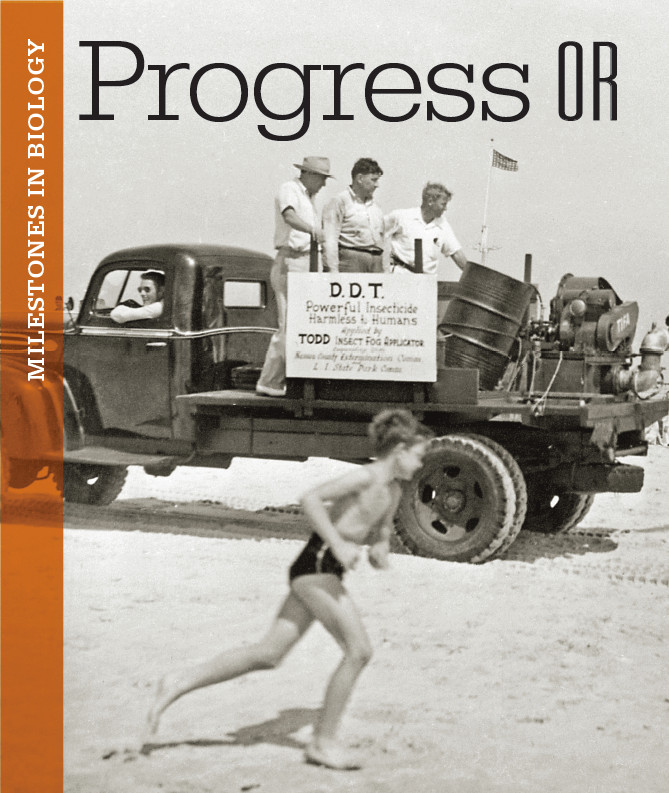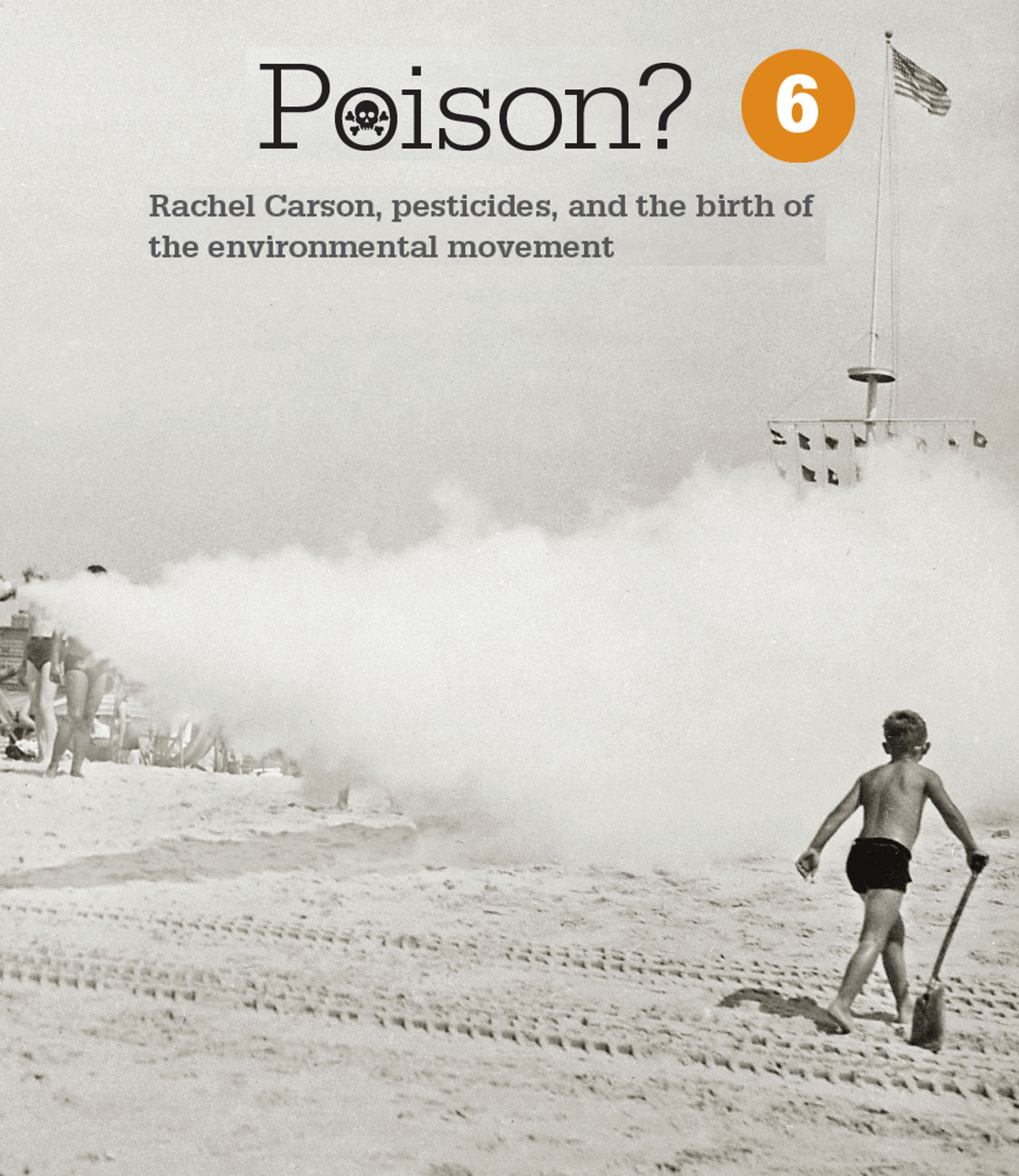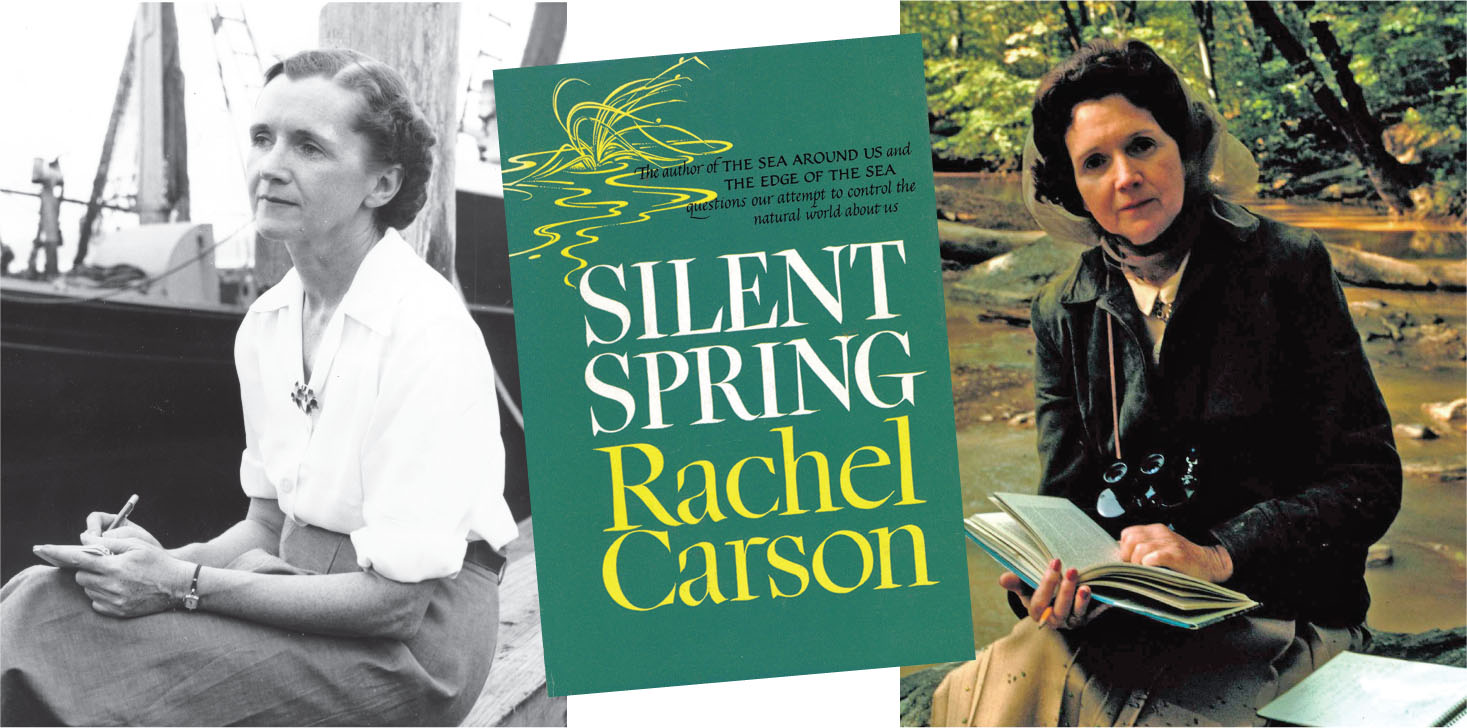


 DRIVING QUESTIONS
DRIVING QUESTIONS
- How can a policy designed to help society cause great harm?
- What is biomagnification, and how does it occur?
- What properties of DDT permit it to negatively affect organisms at a variety of levels in a food chain?
 N 1958, THE BIOLOGIST AND SCIENCE WRITER RACHEL CARSON RECEIVED a disturbing letter from a friend in Massachusetts. The letter described an event that had recently taken place on the friend’s property near Cape Cod: an airplane had sprayed a thick cloud of a pesticide called DDT as part of a coordinated campaign to eradicate mosquitoes. In the days following the spraying, the friend noticed many dead songbirds in the area. The birds had clearly suffered: “Their bills were gaping open, and their splayed claws were drawn up to their breasts in agony.” Could anything be done to stop these aerial sprayings, the friend wanted to know?
N 1958, THE BIOLOGIST AND SCIENCE WRITER RACHEL CARSON RECEIVED a disturbing letter from a friend in Massachusetts. The letter described an event that had recently taken place on the friend’s property near Cape Cod: an airplane had sprayed a thick cloud of a pesticide called DDT as part of a coordinated campaign to eradicate mosquitoes. In the days following the spraying, the friend noticed many dead songbirds in the area. The birds had clearly suffered: “Their bills were gaping open, and their splayed claws were drawn up to their breasts in agony.” Could anything be done to stop these aerial sprayings, the friend wanted to know?

At the time she received the letter, Carson was a well-known science writer who had written some widely popular books about the sea. She cared deeply about nature and was horrified by her friend’s report—especially since it wasn’t the first time she’d heard about DDT toxicity. Carson had been concerned for a number of years about the effects DDT might be having on beneficial insects, birds, and fish, ever since she had worked as a marine biologist with the U.S. Fish and Wildlife Service, which had conducted studies on the pesticide in 1945. But the letter from her friend was a tipping point.
Carson decided that someone should research and write an article about the dangers of pesticides. She tried at first to persuade other writers to take on the topic. When no one would, she realized she had to tackle it herself. Four years later, the outcome was Silent Spring, a book that sparked a national conversation about pesticides and ushered in a new way of thinking about human impacts on the environment.
In the book’s famous opening chapter, “A Fable for Tomorrow,” Carson asked readers to imagine a town “in the heart of America” where “a strange blight” had crept over the land. The birds that had once greeted the coming of spring with a chorus of song now lay sick, dying, and silent. “It was a spring without voices,” she wrote. What had caused this strange blight? “No witchcraft, no enemy action had silenced the rebirth of new life in this stricken world,” Carson wrote. “The people had done it themselves.”